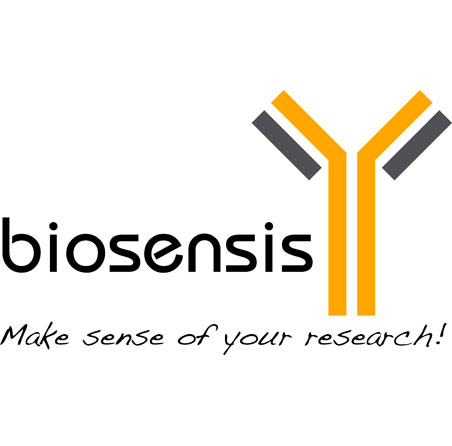Neurotrophin-4/5 (NT-4/5), Sheep Polyclonal Antibody
As low as
US$317.00
Only %1 left
Catalog Number
S-059
- Product Name Neurotrophin-4/5 (NT-4/5), Sheep Polyclonal Antibody
- Product Description Sheep anti-Neurotrophin-4/5 (NT-4/5) Polyclonal Antibody (Unconjugated), suitable for WB, IHC-Frozen, ELISA, Neutralize.
- Alternative Names Neurotrophin-5; NT-5; Neutrophic factor 5; Neurotrophin-4; NT-4; Neutrophic factor 4; NTF5; NTF4
- Application(s) ELISA, IHC-Frozen, Neutralize, WB
- Antibody Host Sheep
- Antibody Type Polyclonal
- Specificity Less than 1% cross-reactivity against NGF, recombinant human BDNF and 5% to NT3 has been shown by dot blot. Known to react with NT4 from rat and human, mouse and monkey.
- Species Reactivity Human, Mouse, Primate, Rat
- Immunogen Description Recombinant human NT4
- Conjugate Unconjugated
- Purity Description Protein G purified IgG
- Regulatory Status For research use only.
Product Info
- Product Description Sheep anti-Neurotrophin-4/5 (NT-4/5) Polyclonal Antibody (Unconjugated), suitable for WB, IHC-Frozen, ELISA, Neutralize.
- Application(s) ELISA, IHC-Frozen, Neutralize, WB
- Application Details IHC, ELISA (1 site), Western Blot, inhibition of biological activity in vitro/in vivo. Recommended to be used at a concentration of 2-10 µg/mL for immunohistochemistry, ELISA and Western blot and inhibition of biological activity in vitro. Use neat for in vivo studies at 2-10 µg/mL (ED50). Note that the concentration of NT4 is generally low in most tissues nevertheless, neonatal testes of rat can be used as a good positive control. Biosensis recommends optimal dilutions/concentrations should be determined by the end user.
- Target Neurotrophin-4/5 (NT-4/5)
- Specificity Less than 1% cross-reactivity against NGF, recombinant human BDNF and 5% to NT3 has been shown by dot blot. Known to react with NT4 from rat and human, mouse and monkey.
- Target Host Species Human
- Species Reactivity Human, Mouse, Primate, Rat
- Antibody Host Sheep
- Antibody Type Polyclonal
- Antibody Isotype IgG
- Conjugate Unconjugated
- Immunogen Description Recombinant human NT4
- Purity Description Protein G purified IgG
- Format Lyophilized
- Reconstitution Instructions Spin vial briefly before opening. Reconstitute in 500 µL sterile-filtered 1X PBS, pH 7.2-7.6. Centrifuge to remove any insoluble material.
- Storage Instructions After reconstitution keep aliquots at -20°C for a higher stability, and at 2-8°C with an appropriate antibacterial agent. Avoid repetitive freeze/thaw cycles. Glycerol (1:1) may be added for an additional stability.
- Batch Number Please see item label.
- Expiration Date 12 months after date of receipt (unopened vial).
- Alternative Names Neurotrophin-5; NT-5; Neutrophic factor 5; Neurotrophin-4; NT-4; Neutrophic factor 4; NTF5; NTF4
- Uniprot Number P34130
- Uniprot Number/Name P34130 (NTF4_HUMAN)
- Scientific Background FUNCTION: Target-derived survival factor for peripheral sensory sympathetic neurons. SUBCELLULAR LOCATION: Secreted protein. TISSUE SPECIFICITY: Highest levels in prostate, lower levels in thymus, placenta, and skeletal muscle. Expressed in embryonic and adult tissues. SIMILARITY: Belongs to the NGF-beta family.
- Shipping Temperature 25°C (ambient)
- UNSPSC CODE 41116161
- Regulatory Status For research use only.
Specifications
-
Specific References
Beros J et al. (2021) Age Related Response of Neonatal Rat Retinal Ganglion Cells to Reduced TrkB Signaling in vitro and in vivo. Front Cell Dev Biol. 9:671087. Application: Rat, Block/Inhibit.
Beros J (2020) Pretreatment of ovaries with collagenase before vitrification keeps the ovarian reserve by maintaining cell-cell adhesion integrity in ovarian follicles. PhD Thesis Application: Rat, Block/Inhibit.
Feron F et al. (2008) Neurotrophin expression in the adult olfactory epithelium. Brain Res. 1196:13-21 Application: Rat, IHC. -
General References
Lodouichi (2000) J. Neuroscie. 20(6): 2155
Zhang et al. (1999) J Neurosci. Meths. 89 (1): 69

 1800 605-5127
1800 605-5127 +61 (0)8 8352 7711
+61 (0)8 8352 7711
